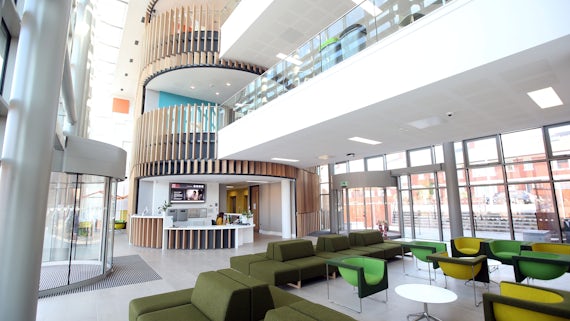Clinical neuroimaging

We're working to understand the mechanisms of neurological and psychiatric disorders, evaluating imaging protocols and incorporating neuroimaging into new treatment programmes.
Improving our knowledge of brain disorders
Our research into the mechanisms of brain diseases draws on substantial synergies with the gene discovery work at the MRC Centre for Neuropsychiatric Genetics and Genomics (MRC CNGG), where substantial progress has been made over the last decade in identifying risk genes for neurodevelopmental disorders such as schizophrenia, bipolar disorder and autism, and neurodegenerative disorders such as Alzheimer’s disease and Parkinson’s disease.
For many of these variants, the mechanisms by which they confer disease risk are not known, and we investigate the effects of these genetic variants (and their interaction with the environment) on brain structure and function and on behaviour. This work is supported by our growing genetic imaging cohort and several international collaborations.
Developing protocols for monitoring disease and treatment effects
Neuroimaging and neurophysiological methods available at the Centre are ideally suited to improve our understanding of psychiatric and neurological diseases.
Examples from ongoing work include the investigation of the pathophysiology of damage and recovery in neuroinflammatory conditions such as multiple sclerosis (MS), of the relationship between brain activation and performance on cognitive tasks, and of structural and functional variations in epilepsy. This research can also contribute to the development of novel preventative or recovery-oriented therapeutic strategies.
Neuroimaging methods at the Centre can help us develop protocols for improved monitoring of disease evolution, identification of predictors of treatment response and treatment effects.
Because mechanisms underlying recovery are active also during normal learning, our scientific interests widen to include functional anatomy of the healthy brain and its changes with activities or learning. Collaborations between clinicians and imaging scientists also contribute to the development of structural and functional neuroimaging for clinical applications such as MS and presurgical evaluation of patients with treatment-refractory epilepsy.
Incorporating neuroimaging into new treatment programmes
Neuroimaging and neurophysiological methods can also help us identify the neurobiological mechanisms of existing or new treatments.
This work is not confined to the investigation of drug effects but includes psychological (for example, cognitive training) and physical (for example, exercise programmes) interventions.
In this regard, we are also interested in the development of clinical neurofeedback. Neurofeedback is a technique by which patients can learn to self-regulate activity in specific brain areas or circuits while this activity is monitored by EEG, MEG or fMRI.
Our researchers are coordinating a European consortium, called the BRAINTRAIN Project, that develops and evaluates neurofeedback protocols for mental and behavioural disorders. For example, one potential target for neurofeedback is the hyperactivation of motivation areas of the brain in response to alcohol cues.
To further these aims, we collaborate closely with the MRC Centre for Neuropsychiatric Genetics and Genomics (MRC CNGG), the Neuroscience and Mental Health Research Institute (NMHRI), the National Centre for Mental Health, the BRAIN Unit, clinical academics in Cardiff University School of Medicine's Psychological medicine and clinical neurosciences division, and a network of clinical collaborators in neurology, psychiatry, clinical psychology, anaesthesiology and other disciplines across the Welsh NHS.
Consolidating smart-specialisation expertise in neuroimaging, the Centre is comparable in scale with facilities in North America, allowing research carried out in Wales to compete with the best in the world.


